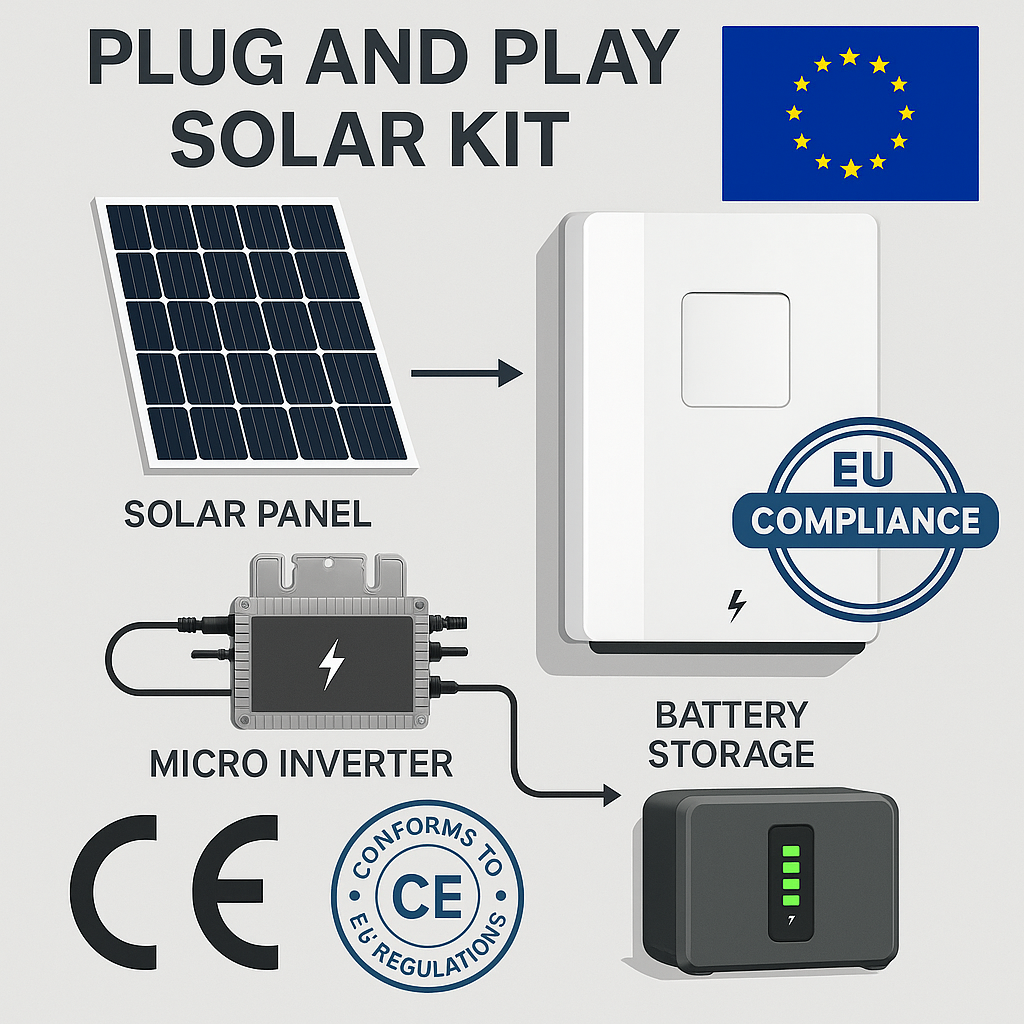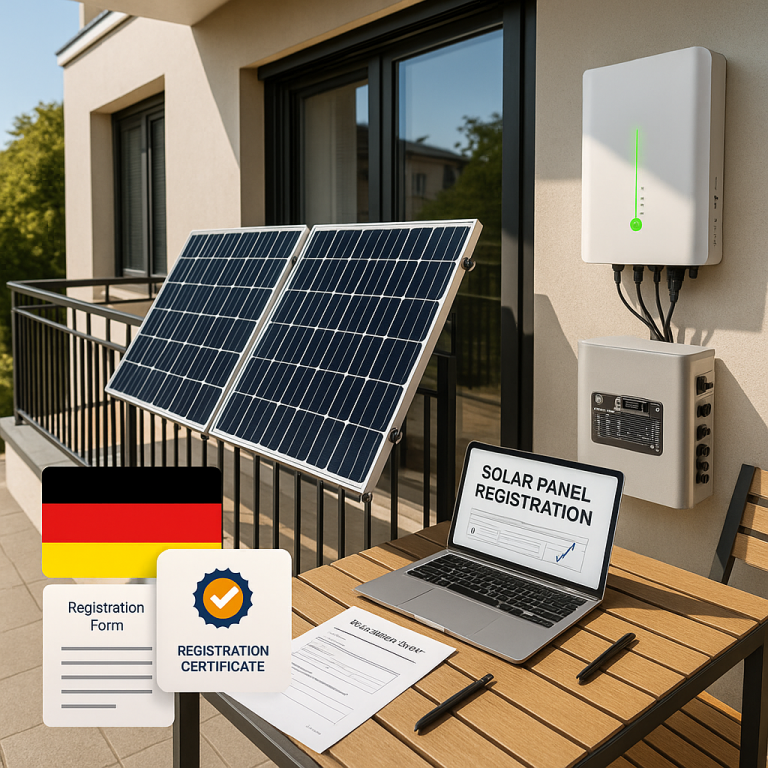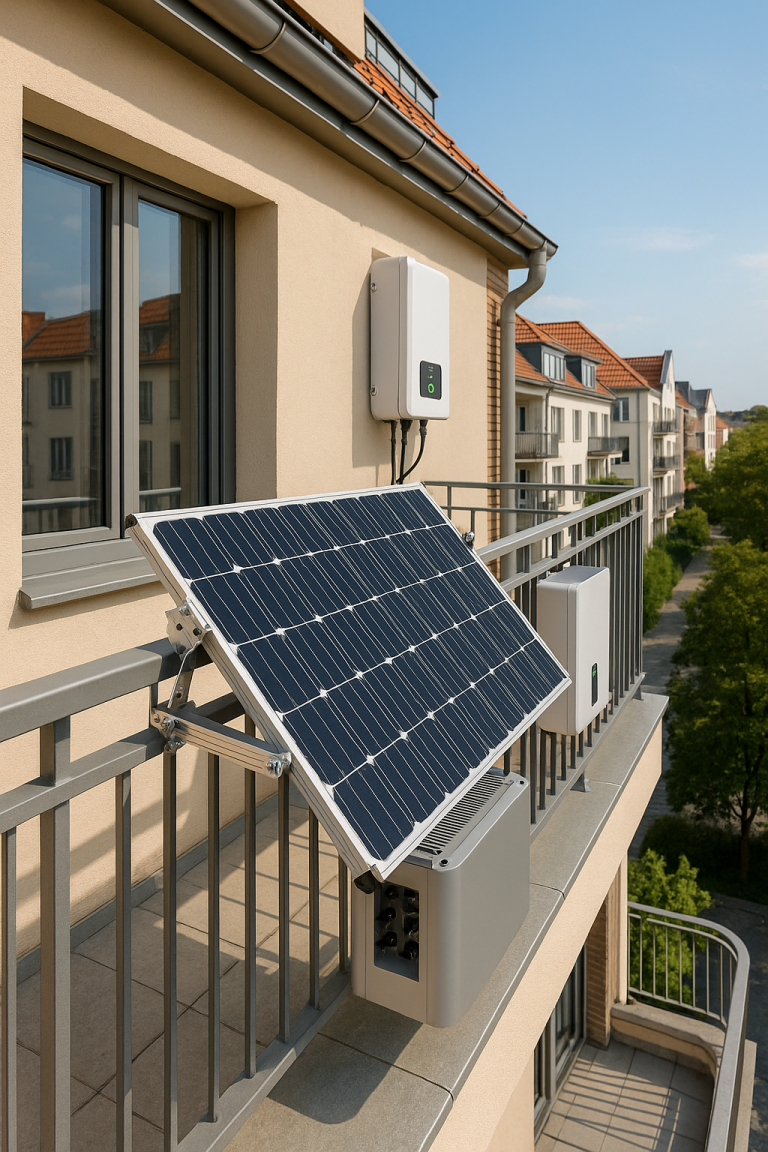✨ Introduction: Why CE Certification Matters for Solar
CE marking is more than just a label — it’s a declaration that a product complies with all essential EU safety, health, and environmental protection requirements. For plug-and-play solar kits, this is especially important as they connect directly to household sockets and interact with the grid.
In this guide, we’ll break down the key CE certification requirements for plug-and-play solar systems sold or installed in Europe.
? 1. What Products Require CE Certification?
Any electrical or electronic solar system sold in the EU — including plug-and-play kits for balconies or homes — must carry a valid CE mark.
This applies to:
- Microinverters
- Solar modules
- Plug cables/connectors
- Integrated batteries (if included)
? 2. Key EU Directives for Solar Systems
CE certification is based on conformity with EU directives. The most relevant ones for plug-and-play solar products include:
| Directive | Purpose |
|---|---|
| Low Voltage Directive (LVD) | Electrical safety for devices 50–1000V AC |
| EMC Directive | Electromagnetic compatibility |
| RED (Radio Equipment Directive) | For devices with wireless connectivity |
| RoHS | Restriction of hazardous substances in electronics |
| EcoDesign/ErP | Energy efficiency & standby requirements (optional) |
Additional national standards (e.g., VDE-AR-N 4105 in Germany) may apply for grid-connection.
? 3. What Must Be Done to Get CE Certified?
Manufacturers must:
- Conduct product testing via accredited lab
- Draft a Declaration of Conformity (DoC)
- Maintain a technical file for 10 years
- Label product with CE mark and identification info
Importers & Distributors must:
- Ensure product is CE marked and DoC is available
- Keep documentation ready for inspection
- Provide user manuals in national languages
? 4. Common Testing & Documentation Required
| Requirement | What It Covers |
|---|---|
| EN 62109 | Safety of power converters (inverters) |
| EN 61000-6-1/3 | EMC immunity/emissions for residential use |
| EN 50549 | Grid interface and disconnection criteria |
| EN 62368-1 (if battery) | Safety for IT/AV/battery interfaces |
| Technical File | Schematics, test reports, manuals |
| DoC | Manufacturer-signed conformity declaration |
? Conclusion: CE = Compliance & Consumer Trust
CE compliance is not just legal—it builds customer trust, avoids recalls, and ensures grid safety. For plug-and-play solar kits to be legally sold and operated in Europe, meeting CE requirements is essential.
? Want to know if your solar product qualifies for CE or need help preparing documentation? Contact JYHSolar’s compliance team or read more on EU solar certification.




